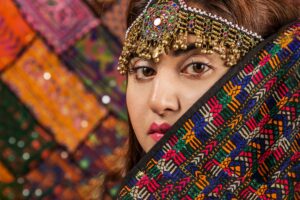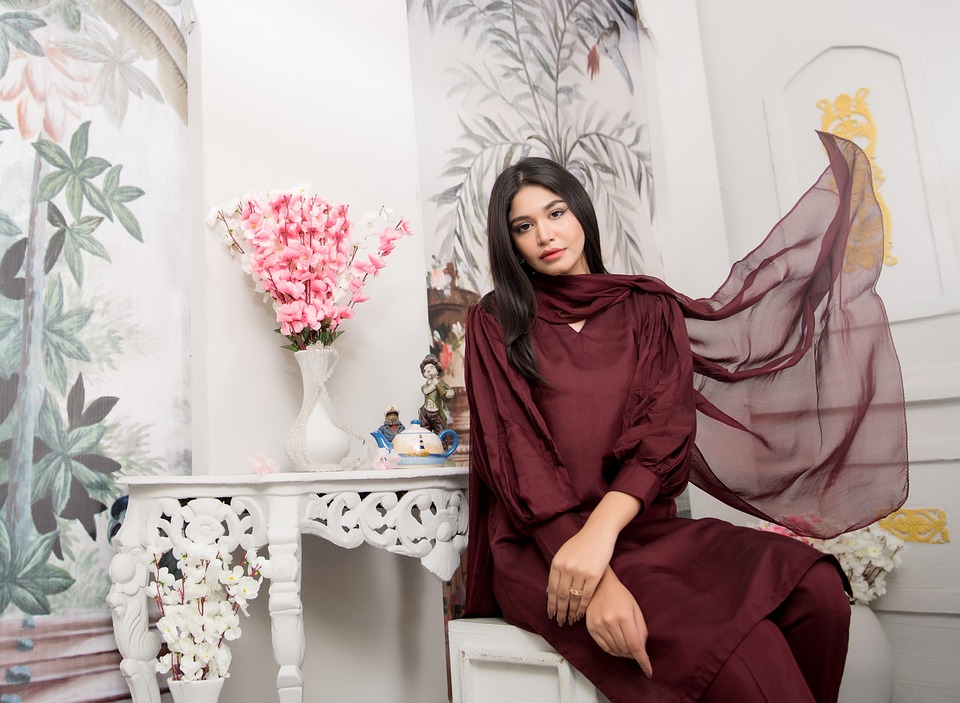Pakistan embodies a very rich heritage. Inhibiting a variety of cultures, languages, and landscapes, Pakistani fashion gets to play with a range of colors, cuts, and textures in its designs. Modern fashion takes great inspiration from conventional looks. This inspiration can be seen in the luxury pret lines of many popular Pakistani brands.
Let’s take a deeper dive into the evolution of Pakistani fashion, and where it is expected to go from here.
Historical Overview
Traditional Pakistani fashion is engraved at the core of the country’s history. It is a product of the Mughal era, and British colonialism, as well as influenced by neighboring countries like India and Afghanistan. Traditional Pakistani attire for women includes a kameez, a shalwar, and a dupatta. On the other hand, for men, it is just a kameez and a shalwar. Men can opt for a waistcoat if they please. Pakistani clothing is designed to be comfortable, reflecting the country’s true values.
Most traditional Pakistani clothes are embellished with delicate beadwork, embroidery, or mirrorwork. Popular embellishments are called zardozi, tilla work, and kashida in the local language. Women further accessories their clothes with traditional jewelry, while men tend to go for a khusa or kheiri as shoe options.
Commonly, Pakistani clothes inclined towards cotton and silk. The chiffon dresses collection is also quite popular in Pakistani fashion. Cotton is more for daily wear, while silk and chiffon are saved for special events.
Evolution of Pakistani Fashion
Looking back, Pakistani fashion has noticeably evolved from traditional to modern styles. It was in the 1980s that Pakistani fashion began to juggle with Western style. The younger generations were greatly inspired by Western looks, infusing them into their traditional wardrobes. Today almost all popular Pakistani brands and designers offer both, traditional and Western, styles of fashion. Moreover, designers are innovating by incorporating Western designs into traditional clothes, or vice versa. For example, a co-ord set made of ajrak fabric. A fun take on East meets West through fashion.
Another prominent change was the introduction of ready-to-wear collections. Before, Pakistani fashion was majorly custom-made. However, ready-to-wear collections just made fashion easier and accessible for so many people. Targeting a mass audience, the Pakistani audience was beginning to experience fast fashion.
Today, Pakistani fashion is an amalgamation of Western and Eastern trends. It allows consumers to express themselves through their choice of clothing. This freedom of expression helps Pakistanis to feel liberated in their sense of self.
Pakistan Fashion Events
Events related to fashion have noticeably picked pace over the years. Presently, they are prominent contributors to Pakistan’s economy. Made up of multiple fashion weeks, couture events, and fashion shows, the fashion industry is up and booming. These shows are screened to a global audience. Not only does this attract worldwide media, but also brings in international buyers and fashion enthusiasts.
International Stage
Furthermore, Pakistani designers also go on to showcase their work on international platforms. Milan Fashion Week and London Fashion Week are also on the list. Global display of Pakistani fashion has helped it seep into regions like the Middle East, Europe, and North America.
However, some designers tend to take inspiration from certain cultures and heritage without giving due credit. Cultural appropriation through fashion exploitation needs to be taken seriously.
Future of Pakistani Fashion
Pakistani fashion continues to evolve. The industry is highly diverse, providing a platform to all young, old, new, and aspiring talent. Being a free space, the Pakistani fashion industry is a great place to explore and experiment with styles and looks. Many new-generation designers are taking on this opportunity and pushing through the invisible boundary of traditional Pakistani fashion.
Pakistani fashion is establishing global outreach and receiving recognition. However, Pakistani brands and designers need to engage in sustainable manufacturing processes if they are to compete in the global markets. Ethical business practices are essential for long-term success.
To conclude, while Pakistani fashion has received global recognition, it has also faced its own set of challenges. Pakistani designers should continue with their innovative and experimental ways, while also incorporating sustainable and ethical business practices.



